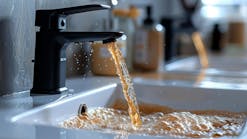Hydrofracturing & The Environment
Updated 7/6/21
Hydrofracturing is not a new concept—in fact, it has been utilized by the gas and oil industries in the U.S. since the 1940s. Thanks to increased media attention, however, many are led to believe that this is a new technology developed specifically for the extraction of natural gas.
What has greatly expanded the profitability and commercialization of natural gas drilling is the use of hydrofracturing in combination with horizontal drilling. This has made shale gas more accessible and drilling for deeper shale deposits more economically feasible. In 2009, for example, Pennsylvania accounted for only 1% of the total dry gas production in the U.S., but today it is one of the most active areas of new development. Currently, natural gas provides approximately 30% of total energy in the U.S., compared to less than 2% in 2001. According to the U.S. Energy Information Administration, current production rates of shale gas drilling are expected to increase rapidly.
Recently, the Secretary of Energy Advisory Board formed a Shale Gas Subcommittee to identify ways to reduce environmental impacts and improve safety in shale gas production operations. On Aug. 11, the subcommittee released its 90-day report for public comment. The committee focused its findings and recommendations on four major areas: public information; reduction of environmental impact and increased safety; creation of a national organization to drive continuous improvement of best operation practices; and research and development.
Public perception of the shale gas drilling industry is divided. Advocates point to the creation of new jobs, economic stimulation and the excellent safety record associated with hydrofracturing. Opponents have been critical about violations, failures and accidents, as well as long-term environmental impacts.
The difference between these views can be attributed to a lack of communication and information. The subcommittee is recommending the creation of a national database that links all of the information available on shale gas development, including state and federal data. This would come with a hefty price tag of $20 million to create and $5 million annually to maintain.
Air Emissions Issues
As shale gas drilling expands across the country, air emissions have become a greater concern. There are documented air quality problems in Wyoming, Colorado, Utah and Texas, and air quality is an increasing concern in the Marcellus Shale region in the eastern part of the U.S.
Air quality emissions are not just a result of drilling, but can occur as a result of exploration, venting or flaring, equipment operation and increased vehicle traffic. Typical air emission contaminants are volatile organic compounds, particulates from diesel exhaust and greenhouse gases such as methane.
Water Quality Concerns
The most publicized concern over hydrofracturing is water quality, and in some cases, quantity. Hydrofracturing a single well will use anywhere from 1 million to 5 million gal of water. This amount of water usage in areas like Texas is causing excessive strains on an already limited resource.
One of the concerns about water quality is that fracturing fluid could migrate into the groundwater aquifer. There are few documented cases on this migration, however. Most water contamination issues are a result of surface spills or leakage into the surrounding shallow water formation, or poorly cemented casings that may leak and allow methane migration.
The subcommittee is recommending the use of mats and other catchment devices to help address spills. It also recommends regular groundwater monitoring and the establishment of buffers around surface water resources.
As for methane migration, not all methane contamination is a result of hydrofracturing—it can also be present as a result of past conventional drilling practices. A recent study focusing on northern Pennsylvania found that higher levels of methane are present in wells surrounding a shale gas production site. The subcommittee is recommending further studies to determine the extent of methane migration in all regions where shale gas operations are present. It also recommends that states and localities implement systems to measure and report background water quality prior to any shale production activity and to make this information publicly available.
The water used in the fracturing process is returned back to the surface as what is referred to as “return water.” This return water is initially processed to remove the gas, but the remaining waste stream is of significant volume.
There are four ways in which the waste stream is disposed of. The first is the reuse of return water as fracturing fluid in a new well. Several drilling companies in the Marcellus Shale region are reusing more than 90% of their return water. A second popular alternative is deep injection disposal wells, which are regulated by EPA. The third method is wastewater treatment—however, most wastewater treatment plants are not designed to treat large volumes of this highly contaminated water effectively. The final option is runoff, which regulations prohibit from flowing into other surface water.
The subcommittee recommends the development of a regionally integrated water management system with the help of industry and other stakeholders to track water use and quality for all water being used in the shale gas drilling process.
Download: Here


